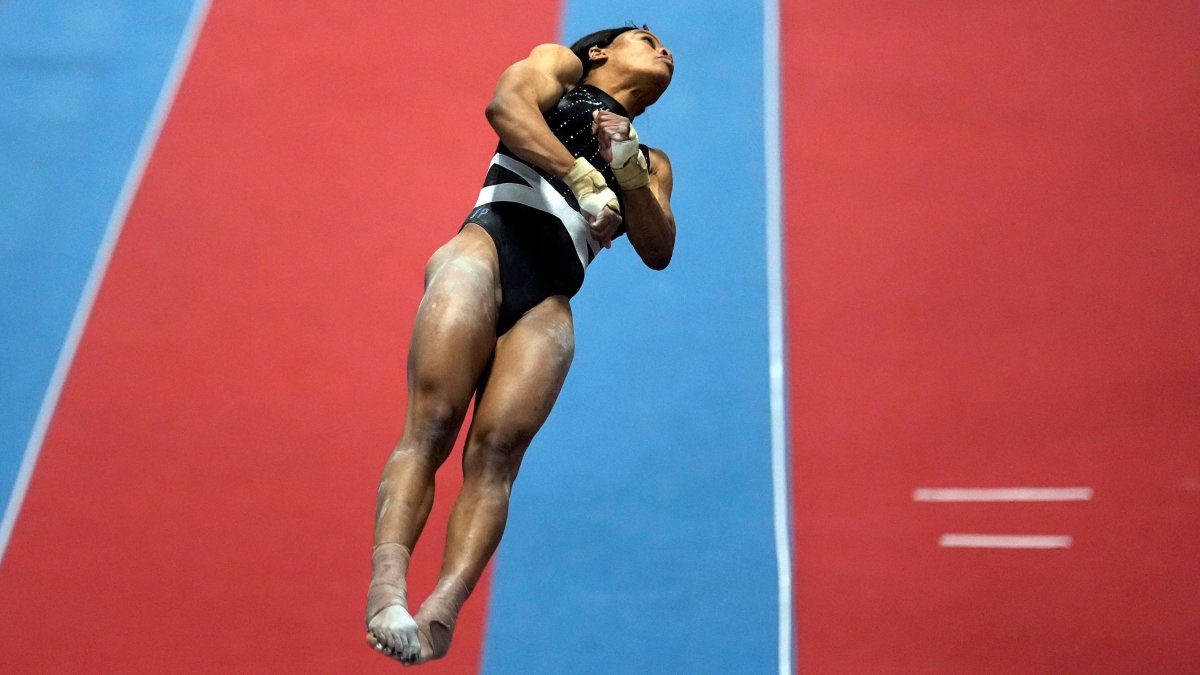By the time Jason Zucker, a year removed from a 27-goal season, went from Arizona to Nashville for just a sixth-round draft pick about two hours before Friday’s NHL trade deadline, it became clear that it was a buyer’s market. And while there weren’t too many big names at the top of the board — the most dynamic player available was new Carolina winger Jake Guentzel, who has been on long-term injured reserve — there still was plenty of buying, as the balance of power in the league continued to shift south and west.
With the caveat that we won’t know who really made out best at this deadline for a few months (remember when Boston “won” the deadline last year?), let’s take a look at which teams took a big step forward at the deadline and which teams fell flat on their faces.
Winner: Carolina Hurricanes
Finally. In their fourth year as true Stanley Cup contenders, general manager Don Waddell and the Hurricanes are finally going for it, landing the biggest fish at the deadline, longtime Pittsburgh Penguins sniper Guentzel. Eschewing their usual team philosophy of not chasing rentals, the Hurricanes added the one thing they’ve needed most in recent seasons — a true goal scorer. Carolina is loaded with talent up front, with the likes of Sebastian Aho, Andrei Svechnikov, Seth Jarvis, Martin Nečas and Teuvo Teräväinen, but its need for an elite sniper was never more glaring than during its Eastern Conference final sweep at the hands of the Florida Panthers last spring, when the Hurricanes scored just six goals. There’s still the perennial question mark in goal, despite Pyotr Kochetkov’s solid season and the return of Freddie Andersen from a blood-clotting issue. But the Hurricanes had a need and they filled it, without even giving up a guaranteed first-rounder or any of their top-five prospects. Just a massive win. And taking a low-risk flier on Evgeny Kuznetsov — who once put up 32 points in 24 playoff games during the Capitals’ 2018 Cup run — is a fun wrinkle that could have a huge payoff, too.
GO DEEPER
NHL trade deadline: Grading every deal completed this trade season
The Penguins have staved off the inevitable longer than their Cup contemporaries. The Los Angeles Kings have gone through an entire rebuild since Pittsburgh’s last Stanley Cup, and the Chicago Blackhawks are just starting their own. The Penguins defiantly rejected the aging curve and decided to keep the band together and go for a fourth Stanley Cup with Crosby, Evgeni Malkin and Kris Letang, even adding another thirtysomething star in Erik Karlsson last summer. It didn’t work. What does it mean for Crosby? It’s almost inconceivable that he won’t finish his career in Pittsburgh, and he’s basically said as much, but the Guentzel trade clearly hurt him. He lost a teammate and a friend, but he also lost some hope for the future. Penguins general manager Kyle Dubas will try to retool on the fly because he has no choice given the age of this roster and the term left for his Big Four (Letang is signed through 2027-28, Karlsson through 2026-27, Malkin through 2025-26 and Crosby through next season). But a few decent rising prospects and a conditional second-round pick (let’s stop calling it a conditional first, shall we?) don’t move the needle much. Crosby’s future is in his own hands, and it’s fun to imagine him — still one of the best players in the world at 36 years old — joining forces with Nathan MacKinnon in Colorado, but don’t bet on it. Crosby’s career isn’t ending anytime soon, but his hope of contention seems to be.
After their spectacular start to the season, the Knights have crashed to Earth pretty hard. Since that 11-0-1 opening, Vegas is a mere 22-23-6, losing seven of its last eight games and falling into the second wild-card spot in the Western Conference. Whatever. The Knights are built for the Stanley Cup playoffs and they know it. They’re also in no real danger of missing the playoffs with the likes of Calgary, Seattle, St. Louis and Minnesota behind them. So they’re acting like the contenders they believe they are, making the most shocking splash of the day by acquiring big center Tomas Hertl — who’s in the second year of an eight-year, $65.1 million contract — from San Jose mere seconds before the deadline.

GO DEEPER
Golden Knights acquiring Tomas Hertl from Sharks
This after adding massive winger Anthony Mantha and bolstering one of their biggest strengths with the best defenseman on the market, Noah Hanifin. Having a guy like Hanifin on your second pairing is a luxury, the kind of luxury Vegas is always willing to pay for. Having a guy like Hertl (who’s expected to return from injury in time for the playoffs) join a cap-strapped dynamo is almost incomprehensible, but it’s the kind of thing only Vegas seems to be able to pull off.
Loser: People who complain about LTIR
Admit it: You hate the Knights because they’re run the way you wish your team was run. They go for it every year. They spend. And they utilize every tool at their disposal to spend more. It’s not cheating to use long-term injured reserve, it’s crafty. It’s smart. Mark Stone is legitimately injured and Vegas is legitimately taking advantage of it. It’s only infuriating because you wish your team did the same.
The Western Conference is loaded at the top this year, with Dallas, Edmonton, Vancouver and Winnipeg harboring legitimate championship hopes, and Vegas lurking in the shadows. But the Avalanche, the 2022 Stanley Cup champions, remain the scariest team in the league, and they only got scarier at the deadline. Defenseman Sean Walker (acquired for a 2025 first-rounder and Ryan Johansen) is a perfect fit for the Avs’ high-pace style, able to skate the puck up the ice or jump in the rush himself.

GO DEEPER
NHL trade grades: Bowen Byram for Casey Mittelstadt a fascinating swap
Bowen Byram’s ceiling seems limitless, but the injury concerns are real and he seemed to have stagnated this season. He was never going to be a top-pair guy in Colorado with Cale Makar and Devon Toews in his way, so the Avs dealt from a position of strength and made a real hockey trade to fill their biggest need at second-line center, sending Byram to Buffalo for fellow young, top-10 pick Casey Mittelstadt, a huge upgrade over Johansen. It’s addition and addition by subtraction, and it might be enough to make Colorado the team to beat in the Western gantlet.
The Leafs certainly got bigger and nastier. But did they get any better? GM Brad Treliving overpaid for two depth defenders in Joel Edmundson and Ilya Lyubushkin and picked up 6-foot-7 Boston University senior Cade Webber from Carolina. Other than depth center Connor Dewar, that’s it. The Leafs blue line is, at best, decent. And decent isn’t going to cut it against the likes of Boston or Florida, one of whom Toronto is almost certain to face in the first round. Especially for a team that is, at best, shaky and uncertain in goal.

Vladimir Tarasenko was a thrifty pickup for Florida. (Eliot J. Schechter / NHLI via Getty Images)
Winner: Florida Panthers
The best team in the Eastern Conference made one of the best moves in the Eastern Conference, picking up Vladimir Tarasenko for a song (just two mid-round picks? With Ottawa eating half of his cap hit? In this economy?). Now this isn’t the Tarasenko who routinely put up 30-40 goals with the St. Louis Blues for a decade, but he’s still built like a tank, and the shot is the last thing to go. The thought of Matthew Tkachuk teeing up Tarasenko one-timers on the Panthers’ second line is tantalizing (and terrifying for the rest of the conference). Tarasenko’s always been a playoff performer, with 44 goals in 97 postseason games, including three goals in the New York Rangers’ seven-game loss to the New Jersey Devils last spring. He can be a mere complementary piece in Florida, making it a perfect landing spot. Adding Kyle Okposo for minor-league defenseman Cale Stalin and a conditional seventh-rounder was a terrific depth move, as well. Eight years since his last playoff appearance, the 35-year-old Okposo will be raring to go and should provide some scoring punch at the bottom of the lineup.
Loser: New Jersey Devils
The Devils acquiring Jake Allen to address their goaltending problems is putting a Band-Aid on a broadsword wound. Allen is signed through next season, while Akira Schmid and Nico Daws are pending restricted free agents and should be back, too (just-acquired Kaapo Kähkönen is a UFA). But no combination of those three players is a viable goaltending duo for a true contender, which New Jersey can and should be. A healthy Devils team with Jacob Markström in net would be a legitimate super team. And Markström, the second-best goalie in the league this year behind Winnipeg’s Connor Hellebuyck, reportedly was willing to waive his no-movement clause to go to New Jersey, so to not get him or Boston’s Linus Ullmark — at nearly any reasonable cost — is an abject failure on the part of the Devils. Getting just a 2024 second-rounder and a 2025 third-rounder for Tyler Toffoli, one of the top wingers on the board, might have just been another example of prices cratering around the league, but it’s another disappointment in a season full of them.
Winner: Winnipeg Jets
With Hellebuyck in net, the Jets always were going to be a difficult out in the playoffs. But by adding Sean Monahan last month and Toffoli on Friday, Winnipeg now has a top nine that can hang with the other beasts in the Western Conference. Monahan has eight goals in his last nine games, and Toffoli is an aggressive, high-volume shooter on pace for his second straight 30-goal season. Toffoli can slot in on Mark Scheifele’s line and allow the versatile Vladislav Namestnikov to slide back to the third line, or Toffoli can join Nikolaj Ehlers and Monahan to form a dynamite second line. Either way, the Jets got deeper, better and far more daunting. The real winner here is Central Division hockey fans, who are going to get a first-round matchup featuring two of the best teams in the league — Colorado, Dallas and Winnipeg. Unfortunately, nearly all the games will start at 8:52 p.m. local time, because the NHL hates the Central Time Zone.
Loser: The goaltending market
Toronto has the 11th-worst five-on-five save percentage in the league. Carolina has the 10th worst. Detroit has the 12th worst. Edmonton and Los Angeles are right smack in the middle of the league. Yet Allen was the only goalie of consequence moved at the deadline. Yes, goalies are difficult to integrate into a team only five or so weeks before the playoffs, because they take longer to get accustomed to a new team than skaters do. Yes, the Flames had a high asking price for Markström. Yes, it’s true that Markström has a no-movement clause and therefore controlled his destiny. But it’s almost GM negligence that none of these goaltending-starved teams jumped at the chance to add a true difference-maker in Markström (or Ullmark, for that matter), particularly those with legitimate championship aspirations.

Chris Tanev filled the Stars’ need for a good right-shot defenseman. (Ezra Shaw / Getty Images)
Winner: Dallas Stars
The Stars check every box as a Cup contender, with elite forwards, tested veterans, an elite No. 1 defenseman and a high-end goaltender. But if you could find a nit to pick, they needed a good right-shot defenseman. So GM Jim Nill went out and got the best one available, Calgary’s Chris Tanev, a puck-eating defensive stalwart. Tanev isn’t as flashy an addition as, say, Guentzel or Tarasenko, but he’s the kind of player who turns good teams into great ones, and contenders into champions.
Loser: The mushy middle
What are the New York Islanders? They’re too old to be on the upswing, too burdened by long-term contracts to overhaul the roster, too good to tank and too bad to rebuild. They’re perpetually on the periphery.
What are the Calgary Flames? They sold off three of the biggest trade chips on the board in Hanifin, Tanev and Elias Lindholm and only got two first-round picks out of it (both late first-rounders), and seem destined to move Markström over the summer. They’re still pretending they’re in the playoff race this season, but they’re also “retooling,” which usually means treading water in ninth or 10th place for years to come.
What are the St. Louis Blues? They hung onto Pavel Buchnevich, one of the more enticing players on the market (with another year of a friendly $5.8 million cap hit, no less) but have very little chance of making the playoffs. They’re a team loaded with players in their 30s that’s slowly fading into irrelevance.
What are the Philadelphia Flyers? They traded 29-year-old Walker but extended 30-year-old Nick Seeler for four years and acquired 35-year-old Erik Johnson for the stretch run. They’re in a playoff spot and have a real chance at staying there but are half-punting on a lovely, unexpected season.
What are the Tampa Bay Lightning? They added a high-speed forward in Anthony Duclair and a veteran defenseman in Matt Dumba but also laundered money as a third party for the Edmonton Oilers and Anaheim Ducks in the Adam Henrique trade. They’re aging, clinging to their championship era, but weighing whether or not to re-sign captain Steven Stamkos.
All of these teams are in the mushy middle, the kind of teams that tend to finish between seventh and 10th place in their conferences, the kind of teams that either lose in the first round or pick in the low teens. They’re running in place, and they’re doing it slowly. And in the modern-day NHL, there’s nothing worse than mediocrity.
(Top photo of Jake Guentzel and Sidney Crosby: Joe Sargent / NHLI via Getty Images)

Daniel Miller is a sports fanatic who lives and breathes athletics. His coverage spans from major league championships to local sports events, delivering up-to-the-minute updates and in-depth analysis for sports enthusiasts.








